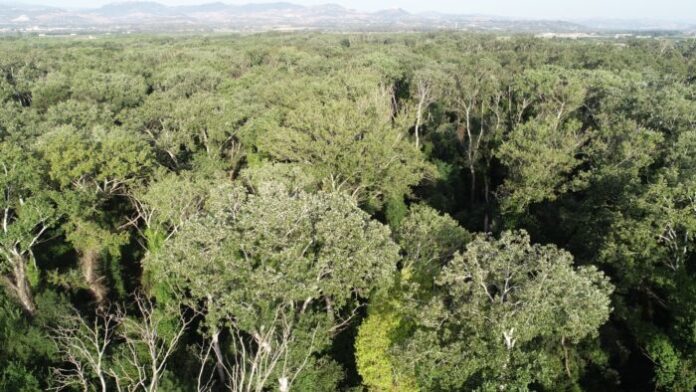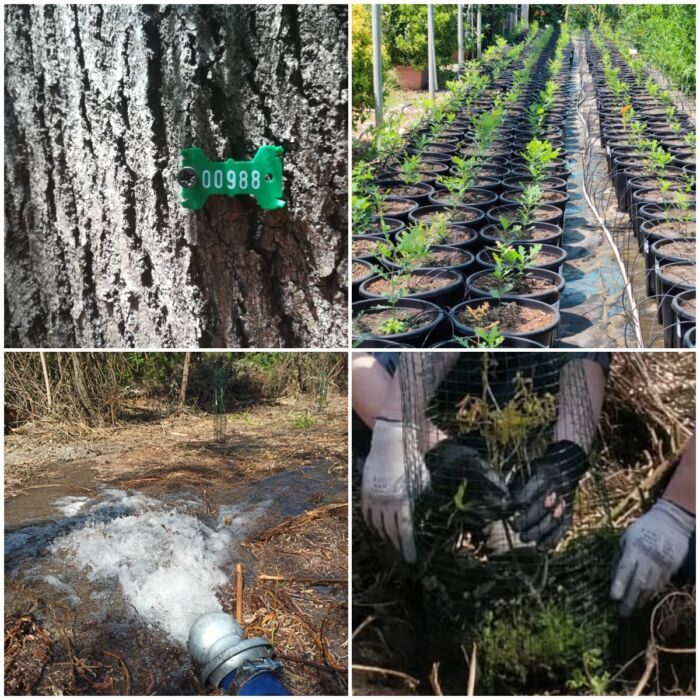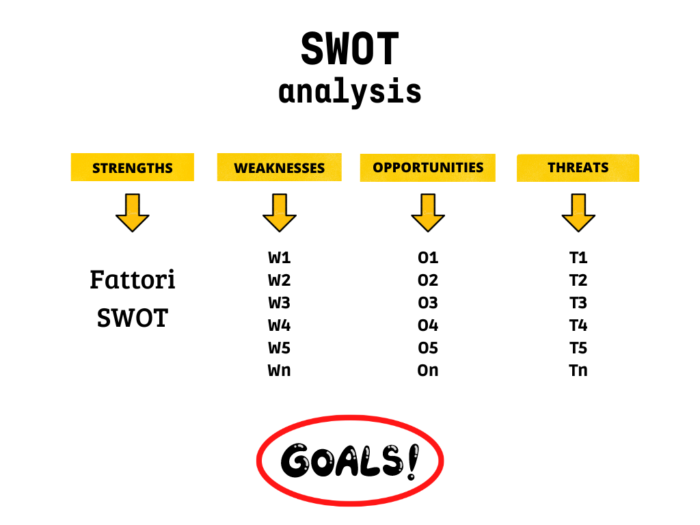
The Bosco Pantano forest represents the last strip of lowland forest in southern Italy, ‘a fossil’ that has escaped the wild reclamation and agricultural intensification that affected the Lucanian territory in the last century. Located on the hydrographic left of the Sinni river, it covers an area of a few hundred hectares in the municipality of Policoro in the province of Matera (Basilicata). As its name suggests, these are forests that vegetate in alluvial or riparian lowland areas. At present, there are very few lowland forests left in Italy and Europe, and some of them are worth mentioning, such as the ‘Bosco Fontana’ state nature reserve in the heart of the Po Valley and the ‘Migliarino Natural Park’ in Tuscany. Over the last century, intensive deforestation and reclamation activities have profoundly altered these stands in terms of extension, hydrogeological stability and distribution of native forest species such as the oak (Quercus robur) and ash (Fraxinus oxycarpa). On a scale of importance, the intervention that has most undermined the ecological structure of the Policorese biotope is undoubtedly the lowering of the surface water table, particularly following the construction of the ‘Monte Cotugno’ reservoir in the early 1980s. While the deforestation process was averted through the establishment of the protected area in 1999, the same cannot be said for all the other degradation phenomena that still continue to affect the entire area. Despite the numerous studies and projects carried out by various bodies of the Basilicata Region, it is not possible, to date, to state that there is complete knowledge of the risks and vulnerabilities that could compromise the survival of these environments in the future. Recent inspections carried out by the University of Basilicata in Southern Italy and the CNR (National Research Council) have in fact revealed the considerable state of distress that characterises the hygrophilous forest species, and in particular the few nuclei of farnia still present. This aspect, therefore, highlights the need to intervene through the implementation of projects aimed at the recovery and conservation of these environments. Specifically, it would be appropriate to implement actions aimed at restoring the original hydrogeological and hydraulic conditions of the area in order to satisfy the main ecological need of forest species typical of lowland forests, i.e. the presence of flooded land for most of the year.
Historical notes
The first descriptions of the ‘Bosco Pantano’ date back to the 4th-5th century B.C. and are contained in the bronze tablets of Heraclea. In addition to purely technical and regulatory aspects, the two plates provide a clear description of the surrounding landscape characterised by the presence of uncultivated land (Arrectos), Mediterranean scrub (Schi-ros) and oak woods (Drumos). However, this last strip of lowland forest was also well known to the many writers who travelled in southern Italy between the 18th and 20th centuries. In fact, the Pantano forest was described as a spectacle of nature, a sacred and impenetrable forest, in which Mediterranean scrub alternated with oak forests rich in wildlife.
“Dusk reigns supreme in this maze of tall, deciduous trees. There is also dense undergrowth; and I measured an old mastic tree that was three metres in circumference. But the exotic characteristic of the forest is the abundance of creepers clinging to the trees, swinging from one top to the other and letting very thin threads of sunlight filter through their intertwined canopy. Policoro has the tangled beauty of a tropical swamp. Pungent odours rise from the rotting leaves and damp earth, and when one has entered that verdant labyrinth, one can even imagine oneself to be in some primitive region of the globe, where no human foot has ever penetrated“.
“A sacred forest dominated by silence and mysterious darkness that reigns under the oaks as old as the world, populated by a peaceful crowd of animals and all kinds of game; by wild boar, fallow deer, deer, roe deer, not to mention martens and squirrels, of which we saw a great number strolling over our heads, from tree to tree“.
These are the words with which the British writer Norman Douglas immortalised the Ionian forest in 1907. Until the early decades of the twentieth century, the Policoro forest was still rich in vegetation, swamps and completely different from its current state. In fact, the transformation processes did not begin until the 1930s, ending a few decades later with the land reform and the construction of the ‘Monte Cotugno’ reservoir (1985). The alterations induced irreversibly changed the territory, drawing the attention and interest of various bodies aimed at safeguarding and protecting the environment. In 1971, the National Research Council recognised the Policoro forest as a biotype of national importance for its botanical and entomological component. This prompted the Basilicata Region in 1980 to take an important initiative, i.e. to subject the Policoro forest to a floro-faunistic constraint (Regional Law No. 40/1980). Communities and institutions thus began to cooperate by locating and protecting all areas with special characteristics of naturalistic and landscape interest. About twenty years later, in 1999, Regional Law No. 28 was issued, establishing the ‘Bosco Pantano di Policoro’ Oriented Nature Reserve.
Actions undertaken
The protection of this precious environment is therefore part of the more general issue of the management of lowland forests, located in areas characterised by high anthropic pressure and the presence of highly impacting activities. For these reasons, since its establishment, the reserve has been the subject of many initiatives aimed at studying and monitoring natural ecosystems. Among the most important initiatives are the Codra Mediterranea, Life Providune, Life Euroturtles, Life Urca Proemys Italy and The Last Enchanted Forest projects. The project L’Ultima Foresta Incantata (The Last Enchanted Forest), financed by the Fondazione con il Sud, is one of the most recent initiatives created thanks to the collaboration of public and private entities, such as the University of Basilicata, the Province of Matera, the WWF and Legambiente. The aim of this project is to safeguard the hygrophilous forest and its symbolic species (Quercus Robur) through the study, census and monitoring of the few nuclei still present, as well as through the implementation of measures aimed at restoring the forest’s original conditions.

Have the strategies and actions implemented in the past produced the expected results?
Most of the time, the adaptation or prevention measures implemented have not been sufficiently successful in limiting the consequences of natural or anthropogenic stressors. However, some interventions have triggered positive habitat renaturalisation phenomena, in particular those carried out since ’99, which included the creation of artificial dunes, backdune ponds and the planting of native essences. Despite this, the survival of this interesting site still appears threatened by a series of negative factors. In this context, highly altered or most vulnerable forest ecosystems take on a priority role, becoming an object of great interest for the scientific community and the entire community. The vulnerability of a forest ecosystem is expressed as ‘the fraction of biomass that could be lost or seriously altered as a result of any disturbance’. In relation to this, it is easy to infer the importance and role played by lowland forests, especially in view of their great ecological and naturalistic value. Quantifying the vulnerability of these forests is therefore crucial in order to develop truly effective mitigation and adaptation strategies.
For these reasons, it is important to adopt innovative strategic approaches that also take into account the concerns of stakeholders.
The dynamic SWOT – AHP approach
As part of the project The Last Enchanted Forest, launched in 2019, a study was conducted to improve knowledge of the ecosystem vulnerability factors of the “Bosco Pantano” site through the application of a hybrid and innovative method called SWOT-AHP.

This method allowed a quali-quantitative evaluation of the SWOT factors and categories, in order to identify the most important aspects for the stakeholders and on which to act through guidelines and/or actions aimed at increasing forest protection. The analysis showed a clear stakeholder interest in the SWOT “strengths” and “threats” groups, highlighting the importance and role that lowland oak forests play in a highly altered environmental context. Similarly, the low importance attributed to the SWOT ‘Weaknesses’ and ‘Opportunities’ groups should also be emphasised. From this, two other important aspects emerge: the first, attributable to a lack of knowledge of the aspects that could compromise the survival of the reserve; the second, attributable to a reduced ability to take advantage of the numerous research and monitoring activities aimed at safeguarding the forest. With regard to the individual SWOT factors, higher percentages were instead recorded for the rarity and uniqueness of the site, high biodiversity, the risk of fire and/or desertification, and finally fragmentation and loss of habitat. In the light of this, there is a clear need to intervene through the identification and adoption of innovative forms of management that can better meet the different territorial needs.
Future projects and prospects
In the wake of the results obtained, it would be desirable to adopt a ‘preventive’ management system that aims at the protection and enhancement of the site through the strengthening of all those projects aimed at studying and gaining knowledge of the reserve. Two important projects appear among the initiatives in 2022: “Ri-Party-Amo” and “Il Cammino Planiziale”. In the first case, it is a national project conducted by WWF Italy in collaboration with the Intesa San Paolo bank. On the other hand, the Cammino Planiziale is a pilot project conceived and implemented by the Basilicata Region in order to achieve the priority objective of restoring and conserving the aquatic environments that exist in the Natura 2000 Network areas, and in particular the areas behind the dunes of the Bosco Pantano di Policoro. Both projects aim at a common goal, namely the protection and conservation of the “Bosco Pantano” site through a program of actions aimed at studying and monitoring, reconstituting habitats, training the youngest and cleaning the different areas. In this context, it therefore appears essential to preserve natural environments from an unstoppable anthropic and climatic decline, as well as to invest a large part of the available resources in activities aimed at the renaturalization and protection of these precious places. Indeed, such an approach could guarantee positive implications not only in social terms, but above all in economic terms if one considers the great opportunities linked to the tourism and culture sector.



































